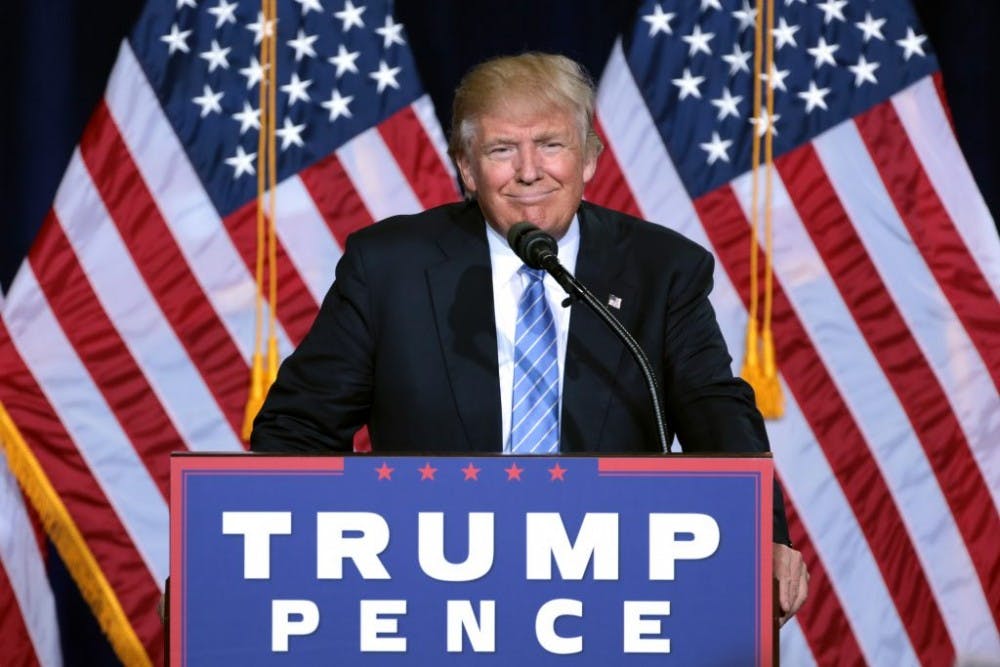There have been complaints of exaggeration or ungrounded fear on the part of those opposed to Trump. Yet it is clear that throughout his campaign, Trump enabled hate. He spewed rivers and rivers of outrageous, inaccurate and harmful rhetoric. He encouraged violence.
One needs only to glance through reports of his rallies to gather buckets of examples. He stirred the messy, roiling American melting pot and turned the heat on “high.” He stirred fear and anger so easily by denying truth, fabricating fictions and switching his position whenever the whim arose. His rise parallels that of countless demagogues.
His election to the presidency has legitimized prejudice and hate in an extreme way. A narcissistic, unstable and power-hungry person has ascended to the most powerful position in the world.
Donald Trump is president-elect, but of course Hillary Clinton won the popular vote. She led with over 600,000 votes and one percentage point. In Virginia, Colorado and Nevada, she won by a two to five percentage point margin.
Yet, in other key swing states, Trump’s numbers edged or settled comfortably over Clinton’s. In Florida, Pennsylvania, Michigan and Wisconsin, he won by one percentage point, and won in North Carolina and Ohio by four and eight, respectively. The contest was close, far too close. Nonetheless, the Electoral College is far from a tie, with Trump at 306 votes and Clinton at 232.
It may be easy to groan about third-party candidates and their voters, especially in cutthroat close states. In Florida, for example, Libertarian Gary Johnson garnered two percent of the popular vote, over 200,000 votes, and Green Party candidate Jill Stein won 0.7 percent, over 60,000.
Not accounting for alternate candidates Darrell Castle and Rocky De La Fuente (who took a combined whopping 0.3 percent of the popular vote), the sum of Stein and Johnson’s votes would have been enough to put Clinton ahead of Trump, if only by a slim margin.
Yet the math rests on a major, shaky assumption. It is no guarantee that if Johnson, Stein or others had not run that their voters would have defected to the Clinton camp. They could have chosen another third-party candidate, voted for Trump or not bothered to show up to the polls at all.
They, like the rest of us voters, exercised their right to vote for someone they believed matched their ideology best. The larger question remains: Why does half of America believe Trump’s ideology — or lack of any consistent one?
Many people, especially ardent Clinton supporters, ask themselves: What more could we have done? Clinton’s ground game, although not stellar, was solid. She outperformed Trump in the debates. College students, both here at Hopkins and across the country, engaged in political discussions and attempted to persuade their peers of the importance of voting and of who the clearly viable option was.
Yet, much of America had already fixated on its decision. Although we all want answers, it seems fruitless to grasp at what is past. It is undoubtedly important to reflect on our actions, but the focus is now on the future: to organize, to support each other, to stand against hate, all of which has already begun.
A Republican House, a Republican Senate, a future conservative Supreme Court Justice, and Donald Trump as president: a political concoction which will affect the country and the world for decades. This election and its consequences have a place in history — not only for the potential disasters.
In total, 38 women of color will serve in the 115th Congress. In the Senate, three new women of color won: Kamala Harris of California (the first Indian American and the second black woman to serve in the Senate), Catherine Cortez Masto of Nevada (the first Latina woman) and Tammy Duckworth of Illinois (wounded veteran and first Thai woman) were elected Tuesday.
Even downballot races represented increasing diversity and new points of view. Ilhan Omar became the first Somali American legislator, elected for Minnesota’s House, and Native Americans won forty other legislative seats across the U.S. These are but two examples.
The streaks of progress may seem to glow only faintly in the uncertain darkness of a Trump presidency, but they are there. It’s up to us to notice their flames and to continue lighting them. If you weren’t politically active before, now’s your chance to step into the street. Light up your own candle, and pass the flame along.


















